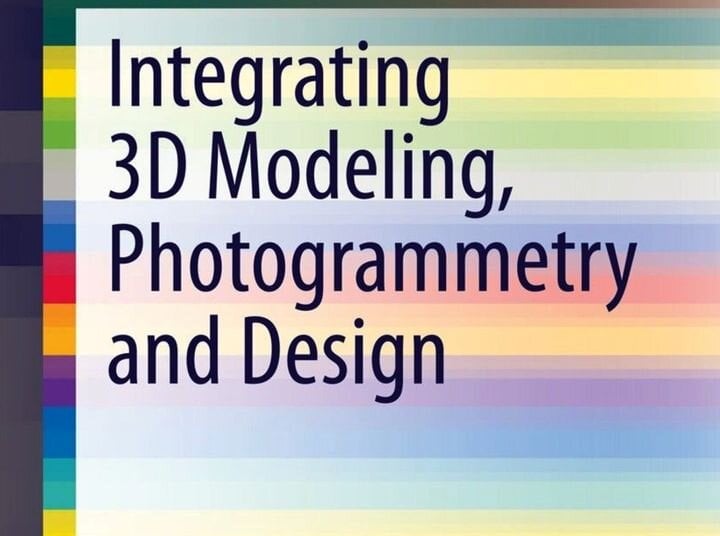This week’s selection is “Integrating 3D Modeling, Photogrammetry and Design” by David Halbstein.
Design is at the very heart of 3D printing; no 3D prints can occur unless there is a design ready to be printed. In many cases the work required to create the design vastly exceeds the act of 3D printing. After a design is developed and prepared for printing, it’s merely a touch of a button to get the print started.
Thus there should be focus on the design process at least equal to the 3D printing process. That’s what this book is about: 3D design, but in a rather different way.
Halbstein describes different workflows commonly used with 3D design. The more common solid modeling workflow involves the gradual creation of a complex design by iteratively adding more elements, as is done in most CAD tools. Start with a block or cylinder and then bang it into the desired shape.
But another workflow he proposes is photogrammetry, a form of 3D scanning involving processor-intensive analysis of a large batch of 2D images. These are transformed into a 3D model by computer vision software and algorithms.
Halbstein says the two methods haven’t really met in the middle due to the weighty 3D models created by photogrammetry, or in fact any typical 3D scanning approach. This is usually true, as 3D models obtained from a scan can be astonishingly large, and therefore one’s ability to handle the files is dependent on workstation capacity.
Halbstein proposes that there are ways to join these two approaches by means of complementary technologies. For example, in photogrammetry it is entirely possible to obtain a reasonably precise measurement of a scanned object. This is done by including special “calibration bars” within the scene. They are captured along with the target object, and thus can be used to determine dimensions.
Another complementary technology is re-topologization, in which a 3D model can be transformed into a more efficient form. Usually this means a simplification of the 3D model by reducing the number of facets.
With these techniques Halbstein proposes a new kind of 3D development workflow potentially usable by artists who wish to combine both natural and artificial designs. He says:
“The tools used to create visual images have a great impact on the final output. From and aesthetic point of view this can be both unintentional and undesirable. Rather than allow the limitations of technology to drive our artistic goals, as artists we seek the reveres, we aim to enable our artistic vision to define the tools we use.”
Halbstein walks us through the knowledge necessary to form this workflow by first explaining in detail photogrammetry, computer vision concepts, surface topology and general 3D design approaches.
Various forms of 3D design are explored, including generative, scanning, mathematics and others, culminating in the “cycle between art and science”.
There are several examples of resources that could be used to this end, however as this book is a couple of years old, some of the technology discussed is out of date. However, the concepts are still quite valid and may even be more possible with today’s more advanced technologies.
Via Amazon


![Integrating 3D Modeling, Photogrammetry and Design [Source: Amazon]](https://fabbaloo.com/wp-content/uploads/2020/05/image-asset_img_5eb0653170949.jpg)